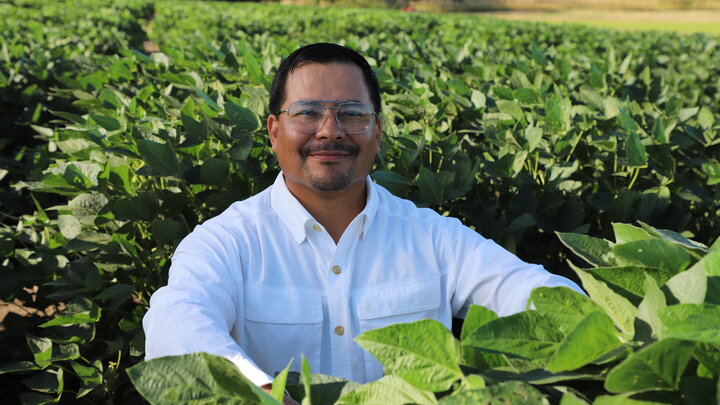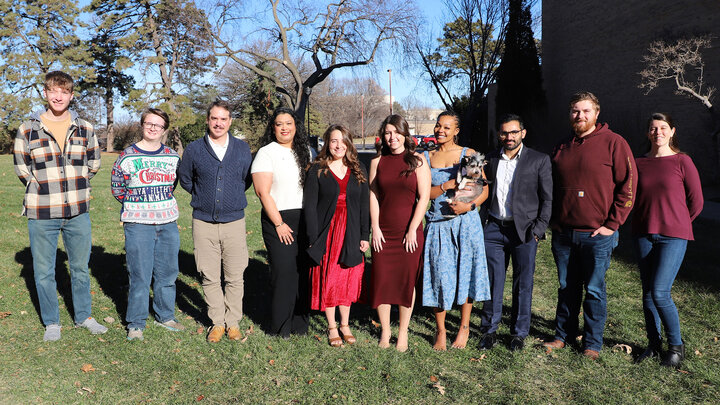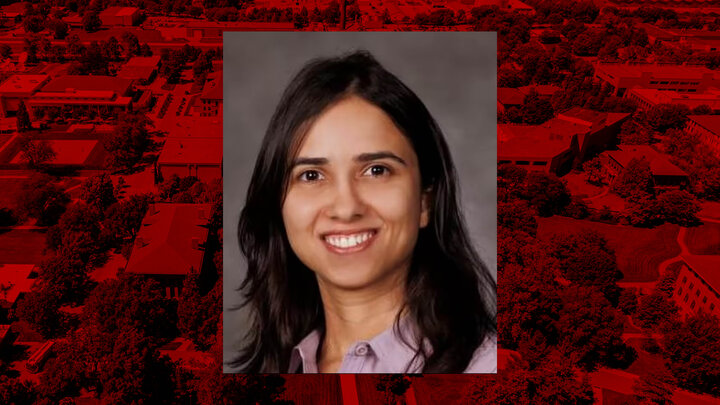In 2022, Cheryl Dunn, a lecturer, herbarium curator and plant biology undergraduate advisor in the Department of Agronomy and Horticulture, attended an annual Nebraska science teacher conference with a grasslands lesson plan and an innovative idea. Though the lesson plan was in the early stages of development and primarily involved using data collection to teach students about grasslands, Dunn learned that teachers knew less about grasslands and their value than she originally thought.
“Teachers didn’t even know how to teach their students how to care about grasslands,” Dunn said. “There was no foundational understanding of why grasslands are important, or how to engage students with the topic, so that’s when we realized we really needed to start from the ground up.”
Following the conference, Dunn began more seriously planning to address the grassland knowledge gap in K-12 schools. She initially hired Angie Peterson, a high school teacher in North Platte, to create lesson plans for the project. From Peterson’s foundational work, Dunn, Walter Schacht, a professor emeritus of agronomy and Becky Young, an associate professor of practice specializing in soil science, crafted five concrete lesson plans that they hope educators across Nebraska can use to help students understand the importance of grasslands.
On July 15, they showcased years of hard work at the Teaching Ecology and Applied Sciences Using the Grassland Biome workshop for middle and high school educators. Over the course of five hours, Dunn, Schacht, Young and Karley Dieckmann, a graduate student, walked their six participants through the lesson plans in Filley Hall on the University of Nebraska-Lincoln’s East Campus.
“I think there is value in going into K-12 classrooms, like I have gone into kindergarten classrooms and taught them about plants and I've done workshops at Morrill Hall’s kid camps this summer,” Dunn said. “There's value in making those connections. Not only does it make the university more visible, it gets people excited about some of the things we can offer, but we're also hopefully creating a spark in somebody that wants to do something in the department or in the sciences.”

The workshop was Nebraska’s introductory contribution to the International Year of Rangelands and Pastoralists. The United Nations General Assembly designated 2026 as the IYRP, an initiative supported by 102 countries and 378 organizations that aims to put sustainable pastoralism and rangeland management at the forefront of policy debates by raising global awareness of their role in economics, sustainability and society.
Dunn has another workshop planned for the summer of 2026 that will cover the same lesson plans and provide the same $200 stipend for the teachers who attend, but with minor changes prompted by feedback from this July’s trial workshop.
“I don't know what I envisioned, but it went way better than I imagined because it was just such a great collaboration,” Dunn said. “They talked amongst themselves, they talked to us, they said what works, they told us how they operate.”
Dunn said that next time, she hopes to devote more time to doing the activities in the lessons and less time instructing, but she was impressed by the teachers’ devotion to their students and to learning new material.
“They have hard jobs, they just do, but you can tell that they really like what they do because they can make anything super interesting for students,” Dunn said. “It’s really great that we can give them tools and lessons that they can modify and do with their students.”
Dunn anticipates the lesson plans and teaching materials will be placed in trunks stationed throughout the state for teachers to check out and use in their classrooms. Dunn said the trunks will mirror those that Nebraska Game and Parks Commission rents out to 4-H, Girl Scouts, Boy Scouts and teachers that cover topics like birds, mammals and prairies, but details about the location and checkout process for Dunn’s trunks are forthcoming.
The lessons in Dunn’s trunks cover grassland ecosystems and environmental factors, native Nebraska plants, soils, carbon and threats to grasslands. Each lesson aims to help teachers and their students understand why grasslands are valuable, something Dunn is passionate about.
Outside of Dunn, who devoted countless hours to lesson plan development and review, and the three colleagues who helped her teach the workshop, Dunn emphasized that creating the trunks was a huge collaboration of educators.

Her lesson plans were reviewed over the last three years by Nebraska Game and Parks Commission educators and graduate students, like doctoral student Alyssa Hall. Dieckmann and Jerry Volesky connected the group with the Center for Grassland Studies for funding, and Jessica Milby, a research technologist for UNL Beef, was instrumental in gathering equipment for the trunks and working out logistics with Dunn. And the workshop would not have happened without Bailey Feit and Tammy Mittelstet, K-12 partners for the College of Agricultural Sciences and Natural Resources, gathering educators to attend.
Dunn said the trunks have been well received by educators so far, and she is optimistic that their use in K-12 schools could help the next generation appreciate and fight for the protection and sustainable use of grasslands.
“Of course I want to have more students to teach about grasslands at the college level and I would love that, but I think more than anything, I want students to understand that they’re important,” Dunn said. “We have to leave some space for untouched grasslands.”
See more photos at IANR told with Exposure.




